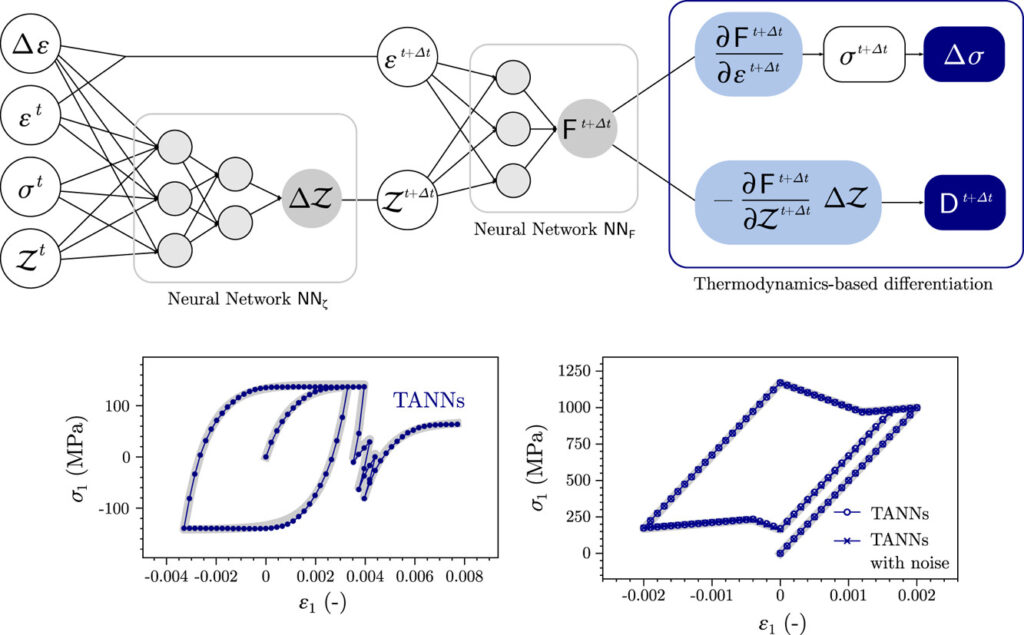
- A new class of data-driven, physics-based, neural networks is proposed for constitutive modeling of strain rate independent processes at the material point level
- The two basic principles of thermodynamics are hardwired in the architecture of Thermodynamics-based Artificial Neural Networks
- The proposed approach is applied for modeling elasto-plastic materials, using both hyper- and hypo-plasticity models, with strain softening and hardening
- Detailed comparisons show that the predictions of the proposed class outperform those of standard neural network approaches
- The implementation of the laws of thermodynamics is found to confer to TANNs high robustness to noise and improved accuracy
Abstract Machine Learning methods and, in particular, Artificial Neural Networks (ANNs) have demonstrated promising capabilities in material constitutive modeling. One of the main drawbacks of such approaches is the lack of a rigorous frame based on the laws of physics. This may render physically inconsistent the predictions of a trained network, which can be even dangerous for real applications.
Here we propose a new class of data-driven, physics-based, neural networks for constitutive modeling of strain rate independent processes at the material point level, which we define as Thermodynamics-based Artificial Neural Networks (TANNs). The two basic principles of thermodynamics are encoded in the network’s architecture by taking advantage of automatic differentiation to compute the numerical derivatives of a network with respect to its inputs. In this way, derivatives of the free-energy, the dissipation rate and their relation with the stress and internal state variables are hardwired in the architecture of TANNs. Consequently, our approach does not have to identify the underlying pattern of thermodynamic laws during training, reducing the need of large data-sets. Moreover the training is more efficient and robust, and the predictions more accurate. Finally and more important, the predictions remain thermodynamically consistent, even for unseen data. Based on these features, TANNs are a starting point for data-driven, physics-based constitutive modeling with neural networks.
We demonstrate the wide applicability of TANNs for modeling elasto-plastic materials, using both hyper- and hypo-plasticity models. Strain hardening and softening are also considered for the hyper-plastic scenario. Detailed comparisons show that the predictions of TANNs outperform those of standard ANNs. Finally, we demonstrate that the implementation of the laws of thermodynamics confers to TANNs high robustness in the presence of noise in the training data, compared to standard approaches.
TANNs’ architecture is general, enabling applications to materials with different or more complex behavior, without any modification.
